QCF: Tomb Raider (2013)
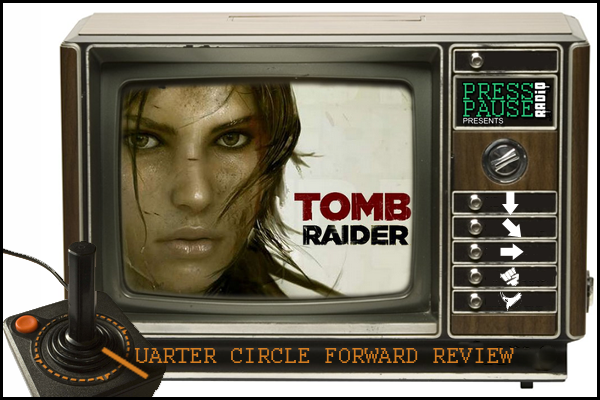
 ronically, we live in a generation of video gaming where technology allows for the most realistic situational simulation of life to date, and yet the gap that measures the suspension of disbelief players have when playing games grows wider in spite of the advances made in development. Titles such as Heavy Rain and The Walking Dead are notable exceptions to the standard, but rarely does a game ever try humanizing the fantastical exodus a player experiences. Crystal Dynamics, however, focused on delivering a title that encompasses this concept.
ronically, we live in a generation of video gaming where technology allows for the most realistic situational simulation of life to date, and yet the gap that measures the suspension of disbelief players have when playing games grows wider in spite of the advances made in development. Titles such as Heavy Rain and The Walking Dead are notable exceptions to the standard, but rarely does a game ever try humanizing the fantastical exodus a player experiences. Crystal Dynamics, however, focused on delivering a title that encompasses this concept.
The cool, confident, and arguably vain Lara Croft that we all grew up with has now transformed into a vulnerable, tender-footed, human protagonist that’s now mixed into series of misfortunate trials that will change her for the rest of her life. Some may argue that Lara’s latest outing maybe controversial for the sake of controversy, but underneath the mud and soundtrack‘s dramatic orchestral reverbs of intensity lies a coming-of-age adventure that represents one of the most genuine experiences in video games today.
The stark points of contrast between Tomb Raider and another certain platform specific gun-toting treasure hunter may have intensified with this reboot in it’s initial appearance, but the underlying content is engrossing. Tomb Raider excels through a particular strength that’s been greatly lacking in current games. To elaborate, producing experiences composed from action-sets and over-the-top moments of spectacle in video games seems far from "fresh" in this generation. Tomb Raider doesn’t redefine the motif in the slightest, but the emphasis of characterization and survival works to immaculately refine the overall formula.
Specifically, unlike Nathan Drake, a larger than life character who manages to overcome all adversities in spite of the odds against him, the focus in Tomb Raider is Lara herself. When it comes to surviving events, her response defines circumstances you encounter as opposed to level of success. These solid moments stick out thanks to the small gaps of dissonance between you and Lara, and the human element resonates cinematically and contextually.
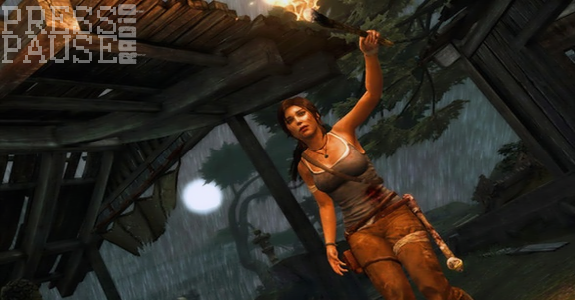
The actions you communicate to her carry a real sense of weight as you progress through the story. Small dynamics like Lara helplessly pushing attackers away when melee is initiated to ruthless swings of her climber’s axe into an attacker’s skull conveys a tangible sense of growth that Lara must undergo to stay alive on an island where morals don't matter. Whether it speaks to the quality 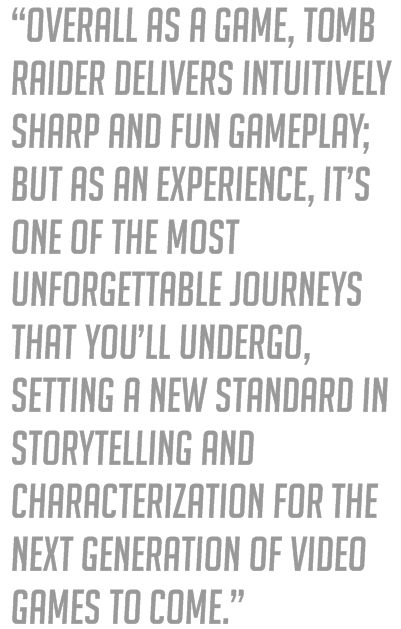 behind the intricate characterization behind Lara Croft that makes her stand above all else, the supporting cast (sans one character that only stood as a testament to acknowledge Lara’s characterization to internally serve the narrative) is unfortunately nowhere near up to the same par as our daring heroine.
behind the intricate characterization behind Lara Croft that makes her stand above all else, the supporting cast (sans one character that only stood as a testament to acknowledge Lara’s characterization to internally serve the narrative) is unfortunately nowhere near up to the same par as our daring heroine.
The responsibilities and individual personal attachments seem shallow, and only seem to play a role that runs Lara through another trial. The characters do their part, but there was hardly any exposition to make a player significantly care about their wellbeing. The aforementioned trials involving them that don’t yield the same sort of emotional investment or satisfaction in comparison to her own personal struggles.
Effectively, in a surprise twist of affairs, Lara’s real standout co-star is the Island of Yamatai itself and how it layers on the gameplay when filtered through Tomb Raider’s masterful presentation. The island itself does an incredible job of both immersing you into a genuine sense of despair and delivering jaw-dropping environments that organically command a sense of wonder while traversing through its thickets. The physical architecture of the island is made of a unique hub-and-spoke design that resembles a Metroidvania format, but in a much more streamlined format.
Now I know everyone who just finished reading that last sentence must be thinking, “Just how can you draw this conclusion, George?”
This works in conjunction to the sense of growth that you undergo as you traverse the island through new abilities. As you progress through the story, you’re given new abilities ranging from Rope arrows to lighters that allow you more independence to roam around the island through recognizable points of interactions. There will be forks on the island that will be options, and generally barricaded by an obstacle that will require a specific ability in order to enter.
Sound familiar? The juxtaposition of elements make it to where the layout of the map feels much larger in scope than it physically is, and it gets bigger through a deliberately slow pace because of the gradual abilities you obtain. Coupled with the opportunity of convenient fast travel, this dynamic genuinely alleviates any fatigue caused by backtracking because of the effective use streamlined fast-travel points that different campsites provide through the different sections of the island.
Platforming is equally integral to the gratification that traversal offers begin actively seeking out recognizable points of contextual contact with every scan you give in the available directions around you. Controlling the rookie archeologist becomes seamless when you familiarize yourself with what you’re capable of and how responsive your input is when you take the plunge with your actions. While traveling the island provides its own sense of splendor, the added incentive to discover and explore comes from the collection of experience points for your efforts. Lara will slowly gain experience through various action like puzzle solving, animal hunting, and story advancement. The experience then acts as currency to purchase new abilities through checkpoint campsites. The abilities gradually add perks to inherent skills like movement and health, but will gradually become more superficial when you upgrade the combat territory of your talents; this makes Lara slightly more lethal when dispatching enemies, but acts more as a display of Lara’s descent into social detachment when she fights to live.
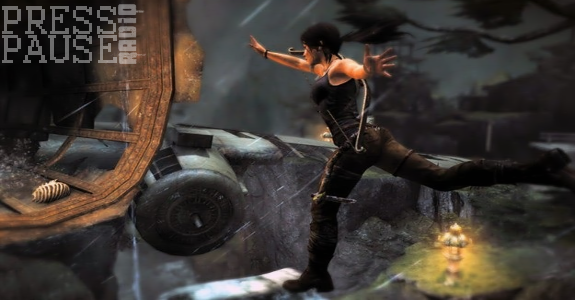
The combat could be best described as a metaphor of a talented but confident acrobat that treks on a surprisingly exceptional artisan tightrope before her, but with an uneven balance and awkward posture that only wishes to reach the other side with blind haste.
While the combat is competent, it is here where the game loses sight of the potential to be so much more than that of its contemporaries. As you initially start to encounter the dangerous denizens of the island and do what you can, you’re initially fatigued, overwhelmed, and most importantly, terrified. Lara slowly arms herself and sneaks through the ranks of large enemy mobs, throwing you into combat encounters only when the story seamlessly transitions you into the encounter. As Lara becomes more sure of herself after she’s bridged the gap of taking mortality into account in order to live, she slowly starts asserting herself into taking bigger enemy mobs; and near the latter half, gunfights start becoming wars of attrition in order to advance the story which just falls into this sort of slump. Again, keep in mind, the combat is engaging and satisfying given the intentional structure of the stage sets for mob encounters and how responsive your actions are when shooting back. Whether you zoom your reticle in scope or keep up on suppression fire, the aim aliasing moves at a conformable rate and is competent enough for how simple it is, but the lack of blind fire or being able to shoot from the hip does hamper combat when you’re engaged in close quarters. The melee combat is also simplistic, but it remains consistent with the theme of growth as you rise from being able to shove 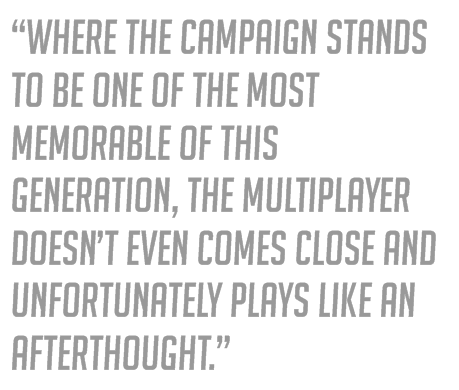 foes back to blinding an enemy with sand to axe swinging.
foes back to blinding an enemy with sand to axe swinging.
There’s a sense of advancement and gradual accomplishment in your physical endeavors against the enemy. The dissonance of Lara’s transformation slowly starts to set in when the frequency and sheer number of enemies start to increase to that of an action pulp-fiction degree.
The subsequent upgrades also feel inconsistent. The combat upgrades only serve to change the available methods of executing an enemy Lara has available. Each upgrade gets needlessly brutal and starts to distort the pacing of what Lara is becoming. For example, we’re talking about quick-time inputs ranging anywhere from to a standard Mexican-styled pistol execution to the ridiculous burst of rifle ammunition that Lara expends in order to tear an opponent in half straight down the middle.
The next point bears mentioning, not in the context of raw critique, but just to acknowledge the differences in constitution and taste when it comes to mature media consumption. So keeping that in mind, when in development, Crystal Dynamics stressed the emphasis they intended to convey to the player on protecting Lara and growing with her. The developer accomplished this mostly by implementing the consequence of watching Lara perish in some of the most gruesome of graphic displays of death portrayed in a game of this manner. Graphic violence is quite honestly one of the oldest tropes in video games, but when it’s applied in conjunction with the personal investment you place in Lara, it delivers a surprising amount of impact that may leave you shaken, especially considering how vivid, slow, and horrifying some of them can be. The volume of these deaths honestly remain consistent with all of the surreal spectacles of odds you encounter in an action setting, so they do fit the gritty motif and excited tone of the game in a tasteful manner. Regardless, the graphic nature of Lara’s many possible deaths may still push you to turn your head away from the screen should you fail, so let this be a warning to the faint of heart.
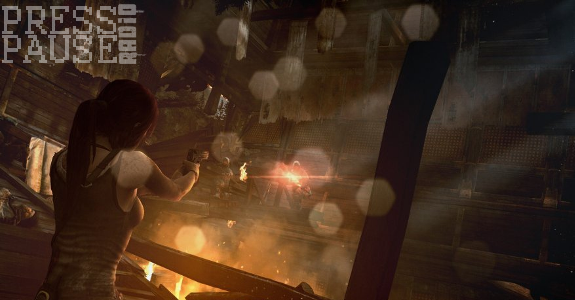
Where the campaign stands to be one of the most memorable this generation, the multiplayer unfortunately plays like an afterthought. The maps are simple in design and play a shallow riff of lazy checklist architecture for gunfight set pieces. Some core concepts of Uncharted multiplayer mechanics are comparable, but are nowhere near as refined and a more stripped down carbon emulation of these dynamics that range from poor twitch shooting to sloppily nerfed platforming that has the lasting appeal of a sun-worn rubber band.
Overall, Tomb Raider delivers sharp and fun gameplay. However, as an experience, it’s one of the most unforgettable journeys you’ll undergo, setting a new standard in storytelling and characterization for the next generation of video games to come. March is a busy month for game releases but I can reassure you that you can safely make this title a priority to play.
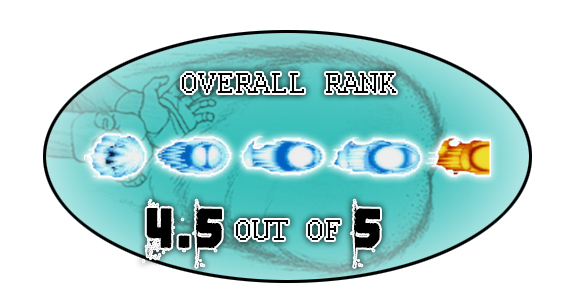
 Crystal Dynamics,
Crystal Dynamics,  Square Enix,
Square Enix,  Tomb Raider,
Tomb Raider,  action games,
action games,  beautiful,
beautiful,  third-person shooter | in
third-person shooter | in  QCF Reviews
QCF Reviews 









